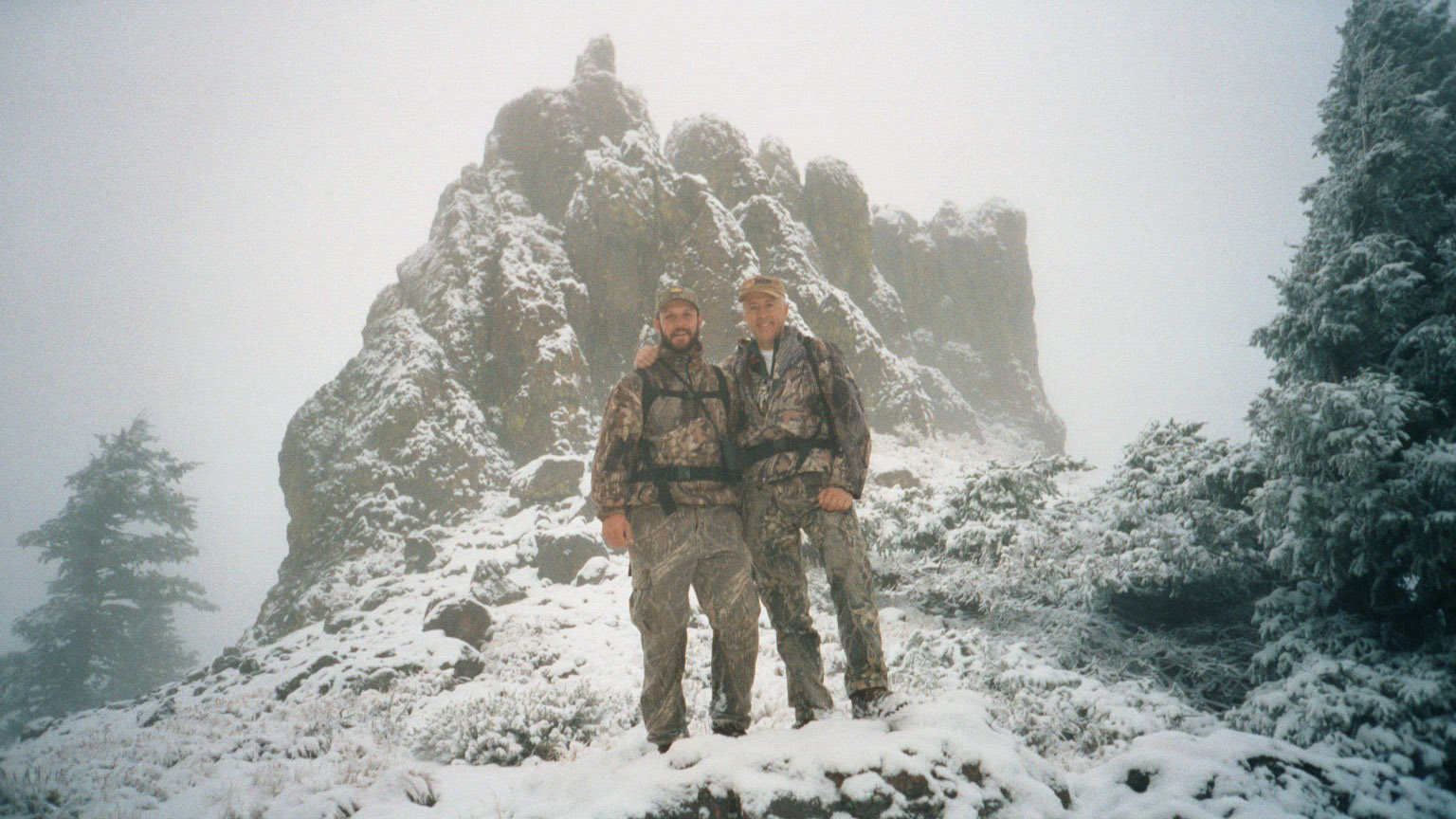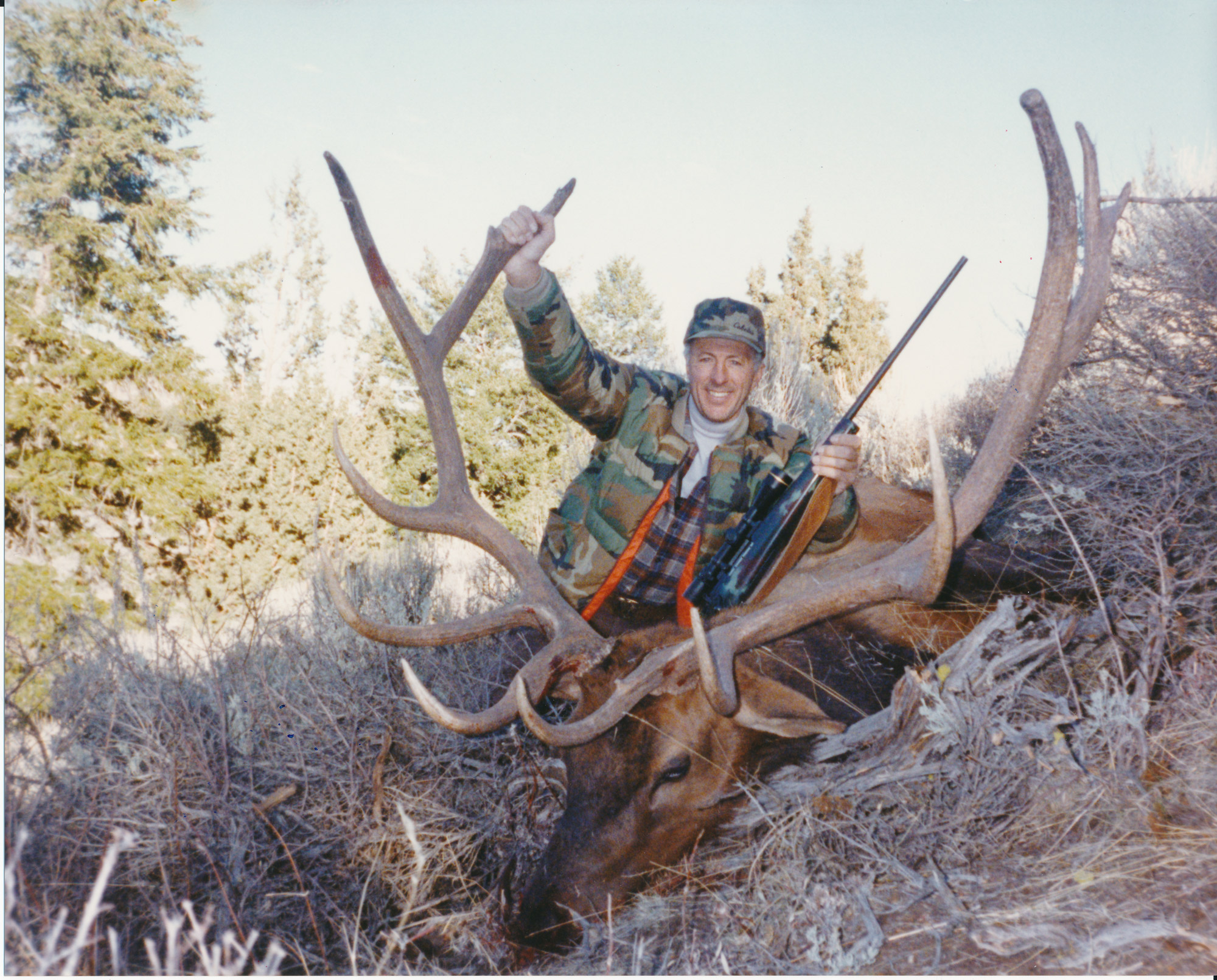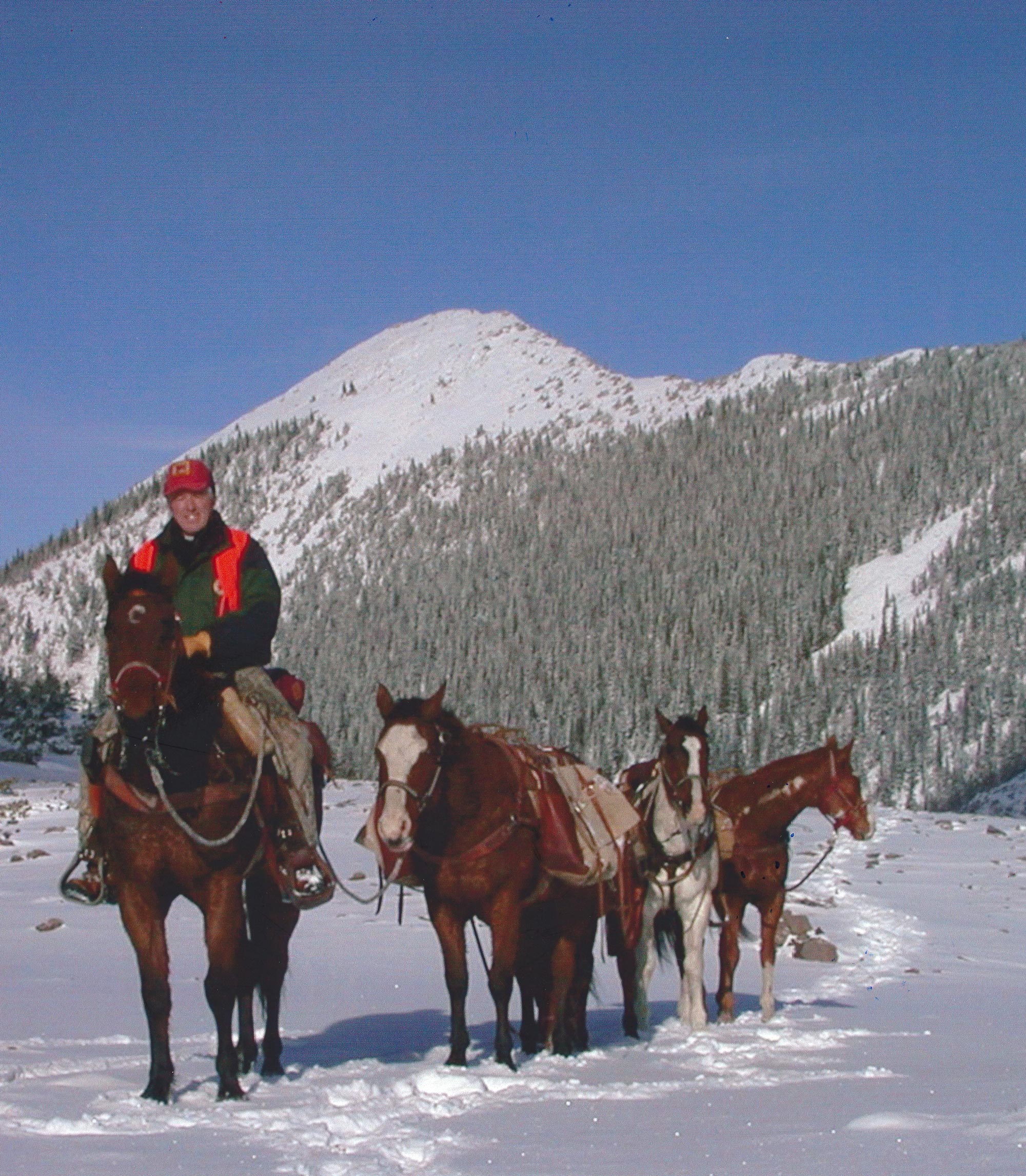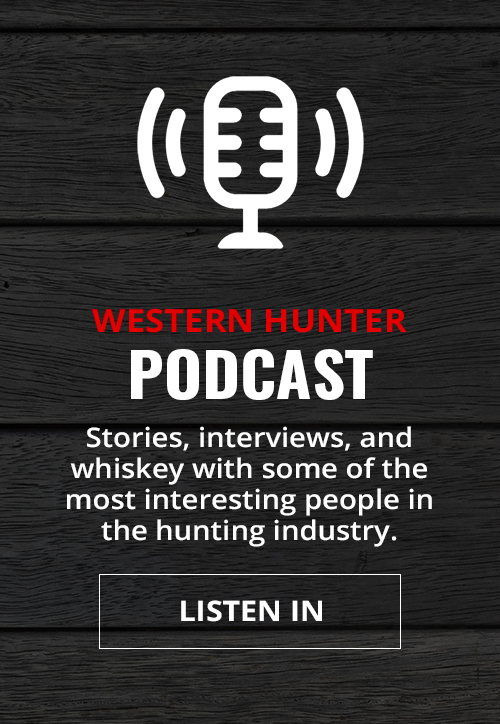
NOTICE: Certain links on this post may earn a commission for Western Hunter Magazine from Amazon or our other affiliate partners when you make a purchase. Thank you for your support.
Backcountry Hunting Ethics
Hunters experience many different kinds of behavior while afield. Often, these experiences become part treasured memories with hunting partners or other hunters we encounter along the trail. On other occasions, these encounters may cause us to pause and wonder what motives were behind what we have encountered. Hunting ethics, customs, traditions are all intricately woven into the behaviors we’ve learned over time and which we exhibit ourselves or encounter while afield.
Over the years, I’ve had my share of wonderfully positive experiences and some that have caused me to ponder, wondering what I might learn from what just happened. In this article, I’ll share some of the less than positive encounters and attempt to find a teachable lesson embedded in each experience.
You’re On My Rock
A few years ago, I met a rancher at a Mule Deer Foundation convention. He eventually invited me to hunt elk with him and his friends on his eastern Oregon ranch. There were a lot of elk and some outstanding mule deer on his ranch, as well as on the neighboring public lands, so I eagerly accepted his invitation.
I arrived at the ranch the afternoon before opening day. There I met the ranch hands and two of the rancher’s guests who were going to be hunting with us.

Since I was a new guest and had never hunted the area, I chose to listen and “go with the flow”, at least for the first day or so. The plan was to get up at 3 a.m. for breakfast and leave ranch headquarters by 4 a.m. in order to be on top of the mountain before daylight. We’d be hunting public land on the mountain above the ranch.
The ride to the top was an adventure. The road turned into a narrow, sketchy two-track that snaked up the hillside trough the fir trees. One of the ranch hands was driving the 1970 vintage Chevy 4x4 with four of us crowded in the front seat.
As the road became more “western” and the snow got deeper, I was glad that the rig wasn’t mine and that I wasn’t driving. We bounced the rear quarter panels off a few trees as we ground our way up the mountain, going as far as possible without chains. When we finally spun out, buried in the snow, we all piled out to put on chains. We then ground our way to the top in low range, with the rancher, hired hand, and another hunter behind us in a carbon copy of our rig.
Once on top, four of us went single-file off the mountain in the dark. The rancher and hired hand took the rigs back down, planning to pick us up somewhere down on the ranch later in the afternoon.
We all followed the ranch hand down through the timber for some distance and then split up, with me going with the ranch hand and the other guests who had hunted the area previously going off another direction.
The strategy was to take up positions at vantage points that would give us shooting command of strategic locations where elk would cross once they were “bumped” by other hunters. It was still dark when the ranch hand stopped and whispered, you sit here until 10 a.m. and then begin still-hunting down through the timber toward the ranch.
As I stood there, I noticed the glow of a cigarette 50 yards up the ridge. With all the time and effort it had taken us to get to this spot, I was surprised to see another hunter.
I whispered to him that there was a hunter sitting just above us. He replied, “Yeah, those guys backpack up here every year. You’ll be able to see the elk and shoot before he does. Just stay here; he’ll leave before long.” With that, he disappeared into the dark.
I had hunted in Washington State, where the common elk hunting strategy was to get out on a ridge where you could shoot down into or across a drainage and wait for elk to be bumped by other hunters. Sitting on a rock waiting for elk to come to me wasn’t in my hunting ethics playbook, as it often led to confrontations over who shot what elk. So, I pondered the situation awhile and decided that it wasn’t fair to the other hunter - who had literally slept in a bivy sack on the mountain all night - for me to encroach on “his rock.”
By then, it was getting daylight and I climbed up to where the hunter was sitting and simply said, “You were here first, so I’ll find another place to hunt.” He seemed pleased and I slipped down into the timber.
There was a lot of shooting that morning and elk were running everywhere. Had I stayed on “the rock”, I’d likely have had a bull soon after daylight. Instead, I had a wonderful day still-hunting through the timber. Late in the day, I got my reward when I jumped a great bull out of a juniper thicket and made a good shot with my .340 Weatherby.
The following year, I was invited back to the ranch to hunt, but this time I was the only hunter present for opening morning. The plan was basically the same. After a hearty breakfast, I picked up my backpack and rifle case, but something didn’t seem right. I pulled my .340 Weatherby out of the case, and to my amazement, the bolt was missing.
The night before I left for Oregon, I was interrupted by an urgent phone call as I was wiping down my Weatherby. After an hour of follow-up calls, I finally put my rifle into the soft case…without the bolt.

My heart sank and I got a sick feeling in my stomach. Without my rifle, the day seemed doomed, because for me, there is nothing more important than my rifle sighted in where I want it, so it shoots where I want it to shoot.
I knew the rancher had several Weatherby rifles, so I told him my situation and asked if I could use one of his. He gave me “that look” and replied, “I sold them all this past summer. All I have is a custom 7mm x .300 Weatherby, but the stock will be a couple of inches short for you.”
At that point, I’d have accepted anything that he had that would kill elk. Then he added, “The good news is that it’s zeroed at 300 yards, which I know you like, and shoots under .5 MOA. The bad news is I only have three cartridges loaded for it.”
The ride up the mountain seemed long and I hardly said a word, still upset with myself. I left the truck and slipped off into the darkness, deciding it would be a day to make “lemonade out of lemons.”
As I hiked down through the timber, I reflected upon what the other hunters were doing the year prior. I thought about a plan and remembered a rock outcropping on a finger ridge that would provide a shooting command over a drainage that was largely sagebrush with Douglas-fir trees scattered throughout the basin. The longest shot would be 400 yards and the basin was crisscrossed by heavily used elk trails. It was a perfect setup.
It was just breaking daylight when I found the rock and quickly climbed up on it. “What a great spot,” I thought as I prepared for potential shot opportunities.
I settled into the spot and was feeling pretty pleased with myself when I heard some rocks rolling behind me. I turned around and three hunters appeared. As they climbed up on the rock behind me, the lead hunter said, “You’re on our rock. You need to leave.”
Three against one didn’t seem like good odds for a fight, so I said something like, “I’ve been here for nearly an hour…”
With that, the second hunter said in a very aggressive voice, “This is our rock. We hunt here every year.”
It was an exceptional perch, but I hadn’t driven 500 miles to fight three dudes on a rock. So I said something like, “Fine with me. I’ll hunt somewhere else.”
This seemed like “strike two” on this hunt. I had a borrowed rifle with three rounds and had just been run off a great spot for opening morning. I wondered about when the third strike might come.
For whatever reason, there weren’t many elk on that ridge that morning, so I got into hunting mode and moved quickly across the mountain. It was 10 a.m. when I found a vantage point. I sat down and began picking apart the juniper thickets and sage below.
I spotted a bull with heavy antlers walking among the junipers, 800 feet in elevation below. I figured I could get a good shot by dropping down if I could see the bull in the thick junipers once I got to his elevation.
Once at the same elevation as the bull, I found an opening and began searching the junipers. I finally spotted him, slowly moving through the junipers. The range looked to be around 400 yards. In those days, I used my duplex reticle to judge distance, but the borrowed rifle did not have a duplex crosshair.

I quickly set up for the shot over my day pack - something I had done many times before. As I waited to see the bull again, I ran the ballistics of the 7mm/.300 Weatherby through my mind.
When the bull appeared, I was ready. I touched off the shot and from across the canyon I could hear the distinctive “whump” of the impact. He took two steps and disappeared into the junipers.
I knew it might be difficult to find the bull in the junipers on the dry south-facing hillside, so I focused upon a dead snag above the bull as a landmark before I left my shooting position. I also hung a piece of surveyor’s tape by my shooting position for additional reference.
I found the bull just 20 yards downhill from where he had been standing. He was the biggest 5x5 bull I’d ever killed and I was delighted to have hit a home run on my final strike of the day!
Skinning and quartering the bull was “interesting”. He was so big, heavy, and awkward that I dressed, skinned, and quartered him as he lay wedged in the juniper. It was a challenge, but a joyous afternoon.
Teachable Hunting Ethics Moment
Hunters are all a bit competitive and guarded with our secret spots - a trait that can lead to hunting ethics conflicts in the field. As one grows and develops as a hunter, we learn from our mentors, our peers, and experiences. As a result, each of us has a set of manners and hunting ethics we’ve developed over time.
My parents and others who served as my hunting ethics mentors were initially responsible for how I acted and reacted to the behavior of others. As I matured, I added “value” to my own code of hunting ethics from continued experiences and information on fair chase and other examples.
My response to the two situations I’ve described was rooted in my personal code of hunting ethics. In the first case, where the ranch hand positioned me in a spot where another hunter was already present, has to do with the basic principles of “first come, first served” or “he who gets there first has priority.” When the ranch hand told me to stay put and the other hunter would leave, my reaction was that it was not fair for me to encroach on the other hunter’s space.
The second situation was just the reverse of the first. I was the one being encroached upon; I was there first. Many hunters would’ve stood up to the latecomers…and maybe even fought over the rock.
Arguing over whether or not historic use trumps “first-come, first-served” came to mind. When I was younger, I may have engaged in that argument. But for me, the fight wasn’t worth it. I’m not much of a “rock sitter” and I know enough about hunting elk to not need to bank on killing an elk that is pushed to me by other hunters. So, I left the rock, focusing on habitat, terrain, elk sign and all else that goes into elk hunting. In the end, it didn’t make any difference, but the issue of being pushed out of my spot by some aggressive hunters left a gnawing feeling in my stomach.
At the end of the day, I remind myself that one of the greatest rewards of hunting the backcountry is going back up on the mountain with my horses and mules to pack elk quarters, regardless of the seemingly negative hunting ethics encounters one may have had with inconsiderate hunters or ranch hands.
At the end of the day, there is no greater reward than leading your string of horses back into the wilderness to retrieve a hard-earned bull, regardless of the challenges you may encounter along the way.




